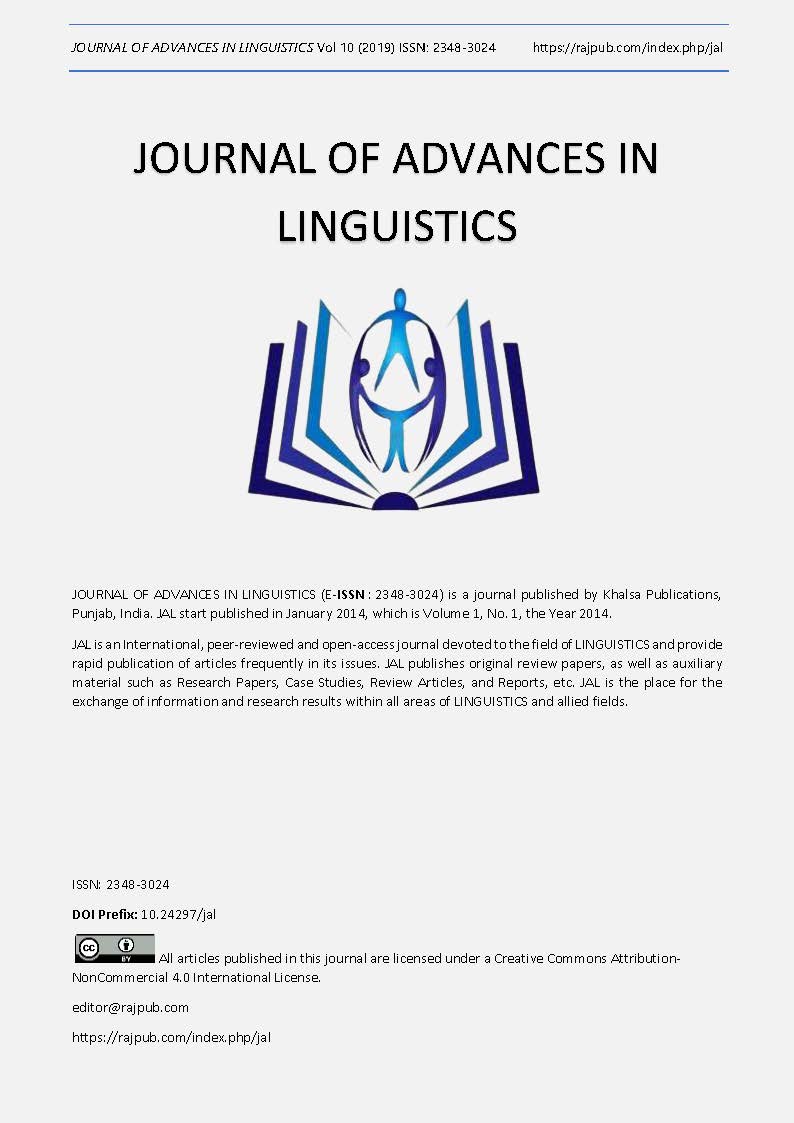Analyzing the Relationship of English Language Learning Anxiety and English Language Learning Strategy Use Among English Major Undergraduates in Shi Jiazhuang, China
DOI:
https://doi.org/10.24297/jal.v10i0.8444Keywords:
Foreign Language Learning, Anxiety, Strategy, Learning Achievement, English Major Students, TeachersAbstract
The study investigated the general state of foreign language learning anxiety and the relationship between foreign language learning anxiety and foreign language learning strategy among English major college students in Shi Jiazhuang, China. The quantitative research method was adopted in this study. The instruments were Foreign Language Class Anxiety Scale and Strategy Inventory Language Learning. The subjects were 400 English major students from Shi Jiazhuang College. The results showed that there exists a negative relationship between foreign language learning anxiety and the use of foreign language learning strategy. According to the findings of this study, it is necessary to reduce learners’ foreign language learning anxiety so as to apply more types of foreign language learning strategies efficiently, especially for those foreign language learners with high-level learning anxiety. Some suggestions were put forward for pedagogical implications, which will make Chinese learners be more successful during the process for foreign language acquisition.
Downloads
References
Chen J. & Hu J. (2012). The role of Students in reducing/increasing listening comprehension test anxiety. English Language Teaching, 5, 178-187.
Cheng R. Q. (2012). School performance of children in English class. Psychological reports, 73(3), 747-754.
Ellis, R. (1994). The study of second language acquisition. Oxford: Oxford University Press.
Gui R.P. (2007). Listening comprehension and anxiety in the English classroom. Modern Language Journal, 89, 206-222.
Han B. C. (2010). Recent developments in second and foreign language learning research. Language Teaching, 40, 191-210.
Horwitz, E. K. (1986). Preliminary evidence for the reliability and validity of a foreign language anxiety scale. TESOL Quarterly, 20(3), 559-562.
Horwitz, E. K., & Young, d. J. (1991). Language anxiety: From theory and research to classroom implications. Englewood Cliffs, NJ: Prentice Hall.
Li H. (2012). The relationship between foreign language anxiety and language learning strategies among university students. Theory and Practice in Language Studies, 2(4), 537-46.
Li X. L. (2015). learners' anxiety and learning strategy in computer-mediated and face- to-face communication. Language Teaching Research, 15(2), 201-229.
Liu H. Y. (2014). Foreign language anxiety and learning style. Foreign Language Annals, 22, 43-45.
Nishatini, M., & Matsuda, T. (2011). The relationship between language anxiety, interpretation of anxiety, intrinsic motivation and the use of learning strategies. US- China Education Review, 3, 438–446.
Noormohamadi, R. (2009). On the relationship between language learning strategies and foreign language anxiety. Journal of Pan-Pacific Association of Applied Linguistics, 13(1), 39-52.
Oxford, R. (1990). Language learning strategies: What every teacher should know. Boston. MA: Heinle & Heinle, Inc.
Wei X. H. (2006). Collaborative Learning: The Barrier to Effective Language Acquisition in English Classrooms. Journal of English As an International Language, 399-126.
Downloads
Published
How to Cite
Issue
Section
License
 All articles published in Journal of Advances in Linguistics are licensed under a Creative Commons Attribution 4.0 International License.
All articles published in Journal of Advances in Linguistics are licensed under a Creative Commons Attribution 4.0 International License.




